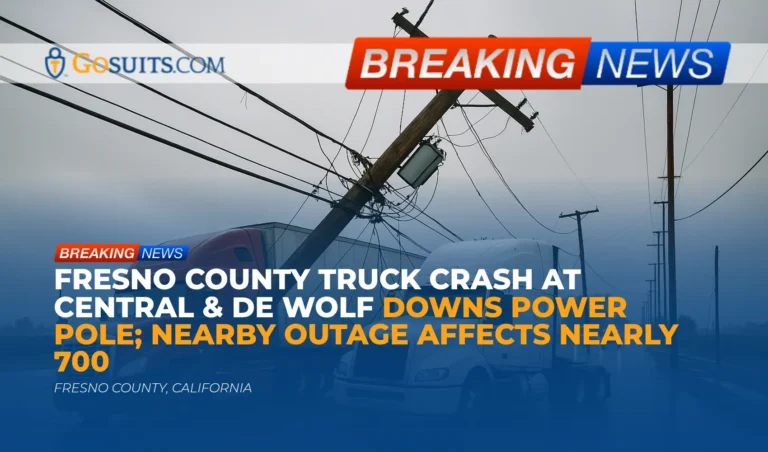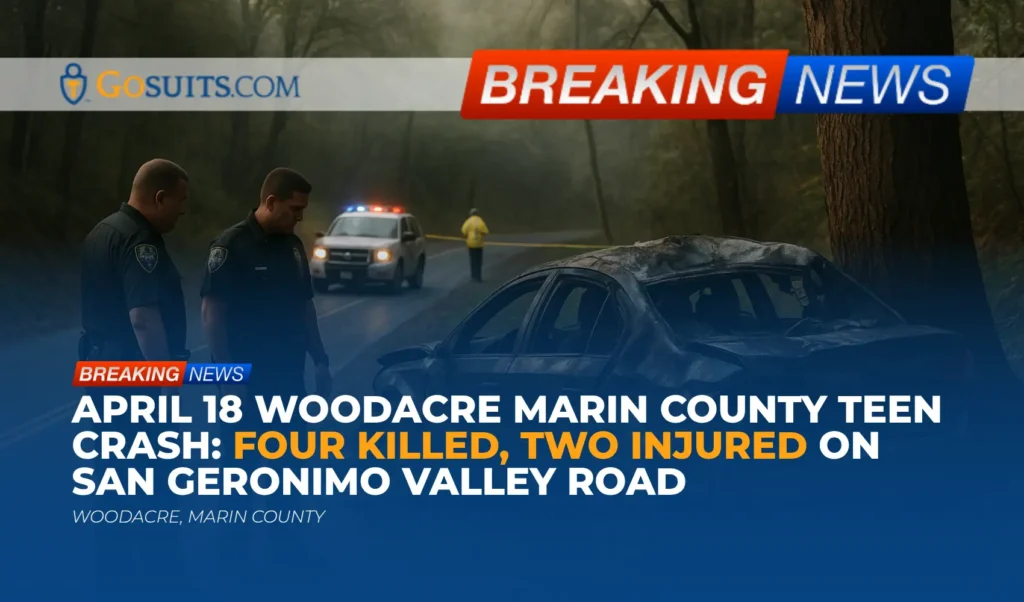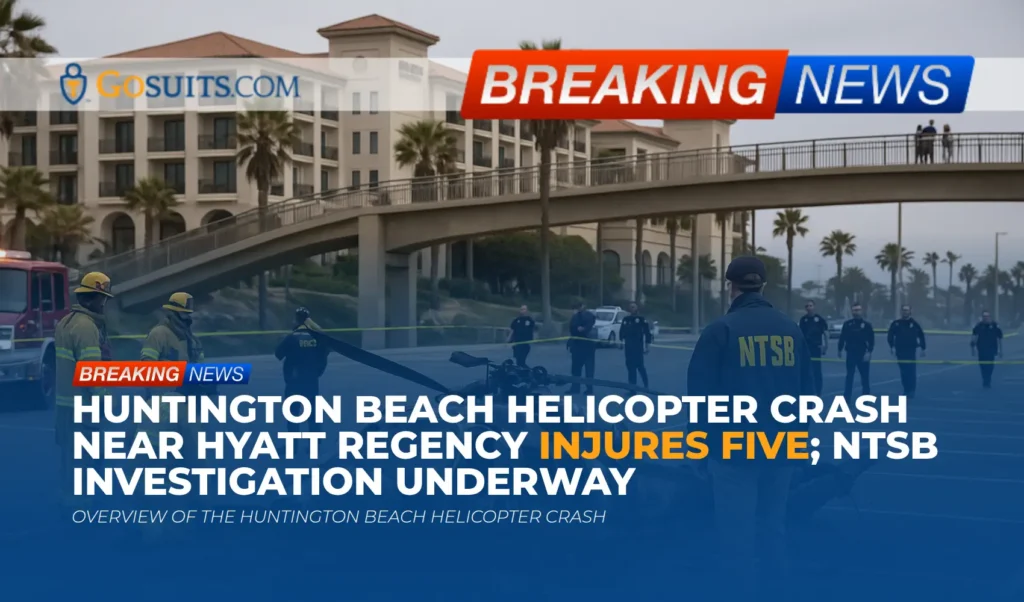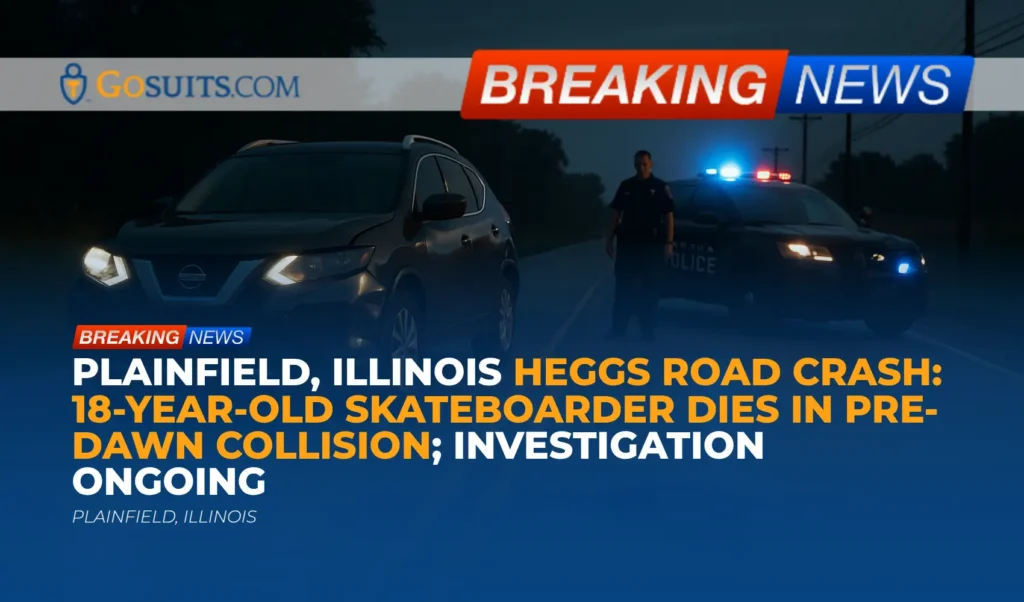- Overview of the Fresno County truck crash and nearby power outage
- Key facts known so far
- Weather, roadway, and infrastructure context
- Potential civil liability considerations after a two-truck collision
- How downed power poles and outages affect safety and property
- What to do next if affected: health, property, and business impacts
- How to get official records and documentation
- Insurance and time-sensitive requirements in California
- Reliable safety and preparedness resources
- Commentary from Gosuits Fresno County, California Personal Injury Attorney
- Why timely action matters now
Overview of the Fresno County truck crash and nearby power outage
A truck crash in Fresno County on Tuesday reportedly led to a power pole falling at the intersection of Central and De Wolf. According to initial reporting, two trucks collided and the impact pushed them into a nearby power pole. A pole subsequently came down and landed on two trucks. Authorities have not released information about injuries at the time of the report. Nearly 700 customers in the area were without power shortly after, although officials did not immediately confirm whether the collision caused the outage. Storm systems were moving through Central California, and drivers were urged to take extra care on wet roads.
When collisions involve heavy vehicles and roadside infrastructure like utility poles, the consequences can include roadway closures, downed lines, localized power disruptions, and potential injuries that are not always immediately apparent. In situations that involve storms or limited visibility, secondary incidents can occur if approaching drivers are not able to stop safely. This article explores what is known so far, immediate safety considerations, potential civil liability issues, and practical next steps for those affected.
Key facts known so far
What happened
Two trucks collided near the intersection of Central and De Wolf in Fresno County. The force of the crash reportedly caused contact with a nearby power pole, which fell and came to rest on two trucks.
Who was involved
Authorities referenced two trucks. No further identifiers were released in the initial report. No names or ages were made public at that time.
Where and when
The incident occurred Tuesday at the intersection of Central and De Wolf in Fresno County, California. A storm system was moving through the region at the time.
Injuries and outages
Officials did not initially confirm any injuries. Approximately 700 customers in the vicinity were without power shortly after, but agencies did not confirm that the collision was the cause of the outage.
Weather, roadway, and infrastructure context
Stormy weather in Central California can increase risk on rural and county roads. Wet pavement reduces tire traction, increases stopping distances, and may conceal hazards like standing water or debris near shoulders. Large vehicles require longer distances to stop and can be more affected by wind and visibility limitations.
National guidance emphasizes adjusting driving behavior in wet conditions. The National Highway Traffic Safety Administration recommends slowing down, increasing following distance, and avoiding cruise control on wet roads to reduce the risk of hydroplaning and loss of control. See NHTSA’s wet weather guidance at NHTSA wet weather driving.
If signals at intersections go dark due to an outage or wiring damage, California law requires drivers to treat the intersection as a four-way stop. The California Vehicle Code states that when a traffic signal is inoperative, the rules for stop intersections apply. See California Vehicle Code section 21800.
When utility poles are hit, conductors may sag or detach. Some lines can remain energized even when they appear harmless. Federal safety guidance warns the public to stay back and never touch downed lines or anything in contact with them. See preparedness tips at Ready.gov Power Outages.

Potential civil liability considerations after a two-truck collision
While investigators will determine the specific causes, some general civil liability considerations may apply in two-truck collisions that involve damage to roadside infrastructure.
- Driver negligence and comparative fault. In California, multiple drivers can share fault for a collision. Factors can include speed relative to conditions, failure to yield, unsafe lane changes, following too closely, or inattention. Wet-weather conditions can heighten duties to slow down and allow extra stopping distance. Liability is often apportioned based on each party’s contribution to the crash.
- Commercial vehicle responsibilities. If one or both trucks are commercial vehicles, questions may arise about vehicle maintenance, braking systems, tire condition, cargo securement, driver rest periods, and fleet safety policies. Company policies and training are often reviewed in serious collisions.
- Roadway conditions and signage. Investigations sometimes evaluate roadway design, signage visibility, and drainage. If a dangerous condition of public property contributed to the crash, claims against a governmental entity may be implicated. California’s Government Claims Act imposes strict notice timelines for such claims. See time limit to present a claim at Gov. Code § 911.2.
- Utility property damage and outages. When utility infrastructure is damaged, utilities or their insurers may seek reimbursement for repairs. Conversely, those harmed by outages sometimes explore claims against utilities, though establishing utility fault typically requires evidence of negligent maintenance or operation. The California Public Utilities Commission provides consumer support and complaint pathways at CPUC Consumer Support.
- Evidence preservation. Vehicle data modules, dash cameras, and roadside camera footage can be important. Early preservation of this information can be crucial to understanding what happened.
Because facts are still developing in this incident, it is too early to draw conclusions about causes or fault. However, those directly affected may benefit from documenting the scene, securing medical evaluation if needed, and preserving any photos or video they have of the intersection and vehicle positions.
How downed power poles and outages affect safety and property
When a power pole falls during or after a collision, safety risks extend beyond the immediate crash damage.
- Electrical hazards. Downed lines may be energized. Even if power is out nearby, lines can remain live or re-energize. Keep a wide distance and call 911. Federal preparedness guidance advises staying away from downed lines and reporting them immediately. See Ready.gov Power Outages.
- Secondary collisions. A fallen pole can block lanes or reduce visibility. Approaching drivers may not have adequate stopping distance in wet conditions. Road closures or detours help mitigate this risk.
- Property damage. Vehicles struck by a utility pole may sustain roof, glass, and structural damage. Cargo may be affected in commercial trucks. Businesses and residents may also experience spoilage or equipment losses due to outages.
- Business interruption. Power-dependent businesses can incur losses if refrigeration, payment systems, or production lines halt. Keeping records of downtime, lost appointments, and perishable inventory is important for any potential insurance claim.
- Medical equipment considerations. Home medical devices that rely on electricity require contingency planning. Households should be aware of backup power options and community resources during outages. See general guidance at Ready.gov Power Outages.
What to do next if affected: health, property, and business impacts
Even when injuries are not immediately obvious, the body’s stress response can mask symptoms. It is sensible to seek a medical evaluation after a significant impact or if symptoms appear later. Documenting injuries and symptoms helps create a clear timeline.
- Seek medical evaluation. If you feel pain, dizziness, or numbness, or if you lost consciousness, seek prompt care. Keep copies of records and imaging.
- Document the scene. If safe to do so, photograph vehicle positions, skid marks, debris, the fallen pole, and any damage to nearby property or signage. Note weather, lighting, and any signal outages.
- Identify witnesses. Names, phone numbers, and any dash cam footage from bystanders can become important.
- Preserve vehicles and parts. Avoid repairing or scrapping vehicles until insurers and, if applicable, investigators have documented them. Vehicle data recorders may hold critical information.
- Track outage impacts. Record the start and end times of power loss, food spoilage, lost work hours, or equipment damage. Save receipts for generators, ice, or temporary lodging.
- Be cautious with insurance communications. Before speaking with any insurance company, consider consulting an attorney for a free consultation to understand rights and obligations. Statements made to insurers can be used in later claim evaluations.
How to get official records and documentation
Official records help verify what occurred and can be useful for insurance and claims.
- Collision report. If the California Highway Patrol responded, collision reports can be requested through the CHP Records Request process. See CHP Records Request. The Fresno Area Office page is available at CHP Fresno Area Office. You may need the date, time, location, and involved vehicle information to locate the report.
- Traffic signal status and road conditions. For state-managed roadways, Caltrans maintains safety and storm travel information at Caltrans Storm Driving Tips. For county roads, check with Fresno County public works or law enforcement for any advisories. If a signal was inoperative, the rule to treat it as a four-way stop is set out in Vehicle Code 21800.
- Outage verification. Utilities typically maintain outage logs and restoration times. While utilities are private companies, consumer support and complaint processes are described by the California Public Utilities Commission at CPUC Consumer Support.
- Coroner information. If a collision involves a fatality, the Fresno County Sheriff-Coroner handles matters related to autopsy and release of remains. General county information is at Fresno County. Families can ask about next steps, identification, and the process for obtaining reports. If there is no fatality, the coroner is typically not involved.
- Public records. Some documents can be requested under the California Public Records Act. The Attorney General provides a PRA overview at OAG Public Records Act. Response times and exemptions apply.
Insurance and time-sensitive requirements in California
After a collision, different time limits may apply depending on the type of claim and parties involved.
- DMV SR-1 accident report. California requires filing an SR-1 with the DMV within 10 days if anyone was injured or killed, or if property damage appears to exceed a statutory threshold. See the DMV’s accident reporting page at DMV Accident Reporting.
- Claims against government entities. If a claim involves a dangerous condition of public property or a government vehicle, written claims generally must be presented within six months for personal injury or death, and within one year for certain property damage claims. See Gov. Code § 911.2. Local governments may have specific claim forms and instructions.
- Utility-related issues. For concerns involving electric service or safety, the CPUC provides consumer complaint channels at CPUC Consumer Support. Claims for property loss related to outages or equipment damage typically depend on evidence of fault and the utility’s tariff terms.
- Insurance communications. Before giving recorded statements or signing authorizations for any insurer, consider speaking with an attorney. What is said to an insurance company can be weighed against you later on.
Reliable safety and preparedness resources
- Wet-weather driving: NHTSA tips for rain and slick roads are at NHTSA wet weather driving.
- Storm and roadway safety: Caltrans guidance for storm travel is at Caltrans Storm Driving Tips.
- Downed lines and outages: Federal preparedness guidance on power outages and downed lines is at Ready.gov Power Outages.
- Requesting collision records: CHP collision report requests are outlined at CHP Records Request.
- Consumer support for utility issues: The CPUC’s complaint and support page is at CPUC Consumer Support.

Commentary from Gosuits Fresno County, California Personal Injury Attorney
Our thoughts are with everyone affected by this collision and the surrounding power outage. Collisions that bring down utility poles are frightening and can ripple through a community, impacting nearby drivers, local families, and businesses. This commentary is provided for educational and general information purposes to help the community understand typical issues that arise after similar incidents.
Based on early reports, two trucks collided at Central and De Wolf and struck a power pole, which fell and rested on two trucks. Details about injuries and fault have not been released. In our experience handling truck and roadway cases, several factors are typically examined: speed for the conditions, visibility in storms, right-of-way at the intersection, vehicle maintenance, and whether any signal or signage issues contributed. If a signal was inoperative or dim due to an outage, California law treats the intersection as a four-way stop, which can affect the analysis of driver duties in the moments before impact.
When corporations and insurance carriers get involved after a collision, they often move fast. Adjusters may ask for recorded statements before people have a clear picture of their injuries or the full property losses, including outage-related impacts. Documentation that might help an injured person can be lost if not preserved early. We frequently see scenarios where key evidence, such as vehicle data, company fleet records, or camera footage from nearby properties, becomes harder to obtain with each passing day. This can tilt the process in favor of the insurer or a large company simply because they control more of the information.
A free consultation can be an important way to understand options before speaking with an insurance company. It can help someone evaluate potential sources of recovery, preserve important evidence, and avoid statements that can be used against them later. Each situation is unique, and learning the time limits that may apply, especially if a public entity or utility is involved, can prevent missed deadlines. No one should feel rushed into decisions without first understanding their rights and the potential consequences of early statements or quick settlement offers.
Why timely action matters now
- Document conditions while they are fresh. Roadway markings, debris patterns, and damage to a fallen pole or lines can change quickly once crews clear the scene. Photos, video, and witness contacts collected early can provide clarity later.
- Protect health and well-being. Some injuries emerge hours or days after a crash. Early medical evaluation creates a baseline and ensures symptoms are not overlooked.
- Preserve vehicles and data. Avoid discarding parts or authorizing repairs before documentation. Electronic control modules and dash cameras can hold critical data that is time-sensitive.
- Track outage-related losses. If a business or household suffered losses during the outage, maintain a log of times, affected equipment, lost appointments, and spoilage. Save receipts for mitigation steps.
- Mind the deadlines. California has strict timelines for certain filings, including DMV accident reporting and claims involving public entities. Acting promptly helps ensure important windows are not missed.
- Consult before calling insurers. Before speaking with any insurance carrier, consider obtaining a free consultation to understand how to proceed. What is said to insurers can be used to limit or dispute claims later.
- Know where to call for official information. For collision reports, the California Highway Patrol provides records request guidance at CHP Records Request. For county-related questions, Fresno County information is at Fresno County. For general outage safety and preparedness, federal guidance is at Ready.gov Power Outages.






